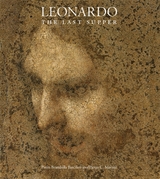2 books about Milan

Infinite Variety
The Life and Legend of the Marchesa Casati
Scot D. Ryersson
University of Minnesota Press, 2004
For the first three decades of the twentieth century, the Marchesa Casati astounded Europe: nude servants gilded in gold leaf attended her; bizarre wax mannequins sat as guests at her dining table; and she was infamous for her evening strolls, naked beneath her furs, parading cheetahs on diamond-studded leashes. Artists painted, sculpted, and photographed her; poets praised her strange beauty. Among them were Gabriele D’Annunzio, Man Ray, Jean Cocteau, Cecil Beaton, and American writers Tennessee Williams, Jack Kerouac, and Ezra Pound. Couturiers Fortuny, Poiret, and Erté dressed her. Some became lovers, others awestruck admirers, but all were influenced by this extraordinary muse. The extravagance ended in 1930 when Casati was more than twenty-five million dollars in debt. Fleeing to London, she spent her final flamboyant years there until her death in 1957. Now nearly a half-century later, Casati’s fashion legacy continues to inspire such designers as John Galliano, Karl Lagerfeld, and Tom Ford. Fully authorized and accurate, this is the fantastic story of the Marchesa Luisa Casati.Scot D. Ryersson is an award-winning freelance writer, illustrator, and graphic designer. He lives in New Jersey.Michael Orlando Yaccarino is a freelance writer specializing in international genre film, fashion, music, and unconventional historical figures. He lives in New Jersey.
[more]

Leonardo, The Last Supper
Pinin Brambilla Barcilon and Pietro C. Marani
University of Chicago Press, 2001
Leonardo's Last Supper, one of the most important works of the Renaissance if not all of Western art, was painted between 1494 and 1498 in the refectory of Santa Maria delle Grazie in Milan. From the moment that the prior at the monastery complained to Leonardo that the work was taking too long, the Last Supper has endured centuries of controversy, neglect, and difficulty. Leonardo, The Last Supper, translated from the Italian, is the definitive document of the recently completed project to reverse these centuries of decline by restoring the painting and preserving it in a manner that generations of conservators have failed to do.
The technical problems with the Last Supper began as soon as Leonardo started to paint it. He jettisoned the traditional fresco technique of applying paint to wet plaster, a method unsuited to Leonardo's slow and thorough execution, and created the work instead with an experimental technique that involved painting directly on the dry plaster. With this renegade method, Leonardo rendered one of the most enduring painting techniques volatile and unstable. Added to this initial complication have been centuries of pollution, tourists, candle smoke, and the ravages of age, not to mention food fights in the refectory staged by Napoleonic soldiers and Allied bombs in 1943. By the middle of the twentieth century, the Last Supper was in desperate need of a complete restoration.
Pinin Brambilla Barcilon was chosen to head this twenty-year project, and Leonardo, The Last Supper is the official record of her remarkable effort. It first documents the cleaning and removal of the overpainting performed in the other attempts at restoration and then turns to Barcilon's meticulous additions in watercolor, which were based on Leonardo's preparatory drawings, early copies of the painting, and contemporary textual descriptions. This book presents full-scale reproductions of details from the fresco that clearly display and distinguish Leonardo's hand from that of the restorer. With nearly 400 sumptuous color reproductions, the most comprehensive technical documentation of the project by Barcilon, and an introductory essay by art historian and project codirector Pietro C. Marani that focuses on the history of the fresco, Leonardo, The Last Supper is an invaluable historic record, an extraordinarily handsome book, and an essential volume for anyone who appreciates the beauty, technical achievements, and fate of Renaissance painting.
The technical problems with the Last Supper began as soon as Leonardo started to paint it. He jettisoned the traditional fresco technique of applying paint to wet plaster, a method unsuited to Leonardo's slow and thorough execution, and created the work instead with an experimental technique that involved painting directly on the dry plaster. With this renegade method, Leonardo rendered one of the most enduring painting techniques volatile and unstable. Added to this initial complication have been centuries of pollution, tourists, candle smoke, and the ravages of age, not to mention food fights in the refectory staged by Napoleonic soldiers and Allied bombs in 1943. By the middle of the twentieth century, the Last Supper was in desperate need of a complete restoration.
Pinin Brambilla Barcilon was chosen to head this twenty-year project, and Leonardo, The Last Supper is the official record of her remarkable effort. It first documents the cleaning and removal of the overpainting performed in the other attempts at restoration and then turns to Barcilon's meticulous additions in watercolor, which were based on Leonardo's preparatory drawings, early copies of the painting, and contemporary textual descriptions. This book presents full-scale reproductions of details from the fresco that clearly display and distinguish Leonardo's hand from that of the restorer. With nearly 400 sumptuous color reproductions, the most comprehensive technical documentation of the project by Barcilon, and an introductory essay by art historian and project codirector Pietro C. Marani that focuses on the history of the fresco, Leonardo, The Last Supper is an invaluable historic record, an extraordinarily handsome book, and an essential volume for anyone who appreciates the beauty, technical achievements, and fate of Renaissance painting.
[more]
READERS
Browse our collection.
PUBLISHERS
See BiblioVault's publisher services.
STUDENT SERVICES
Files for college accessibility offices.
UChicago Accessibility Resources
home | accessibility | search | about | contact us
BiblioVault ® 2001 - 2024
The University of Chicago Press









